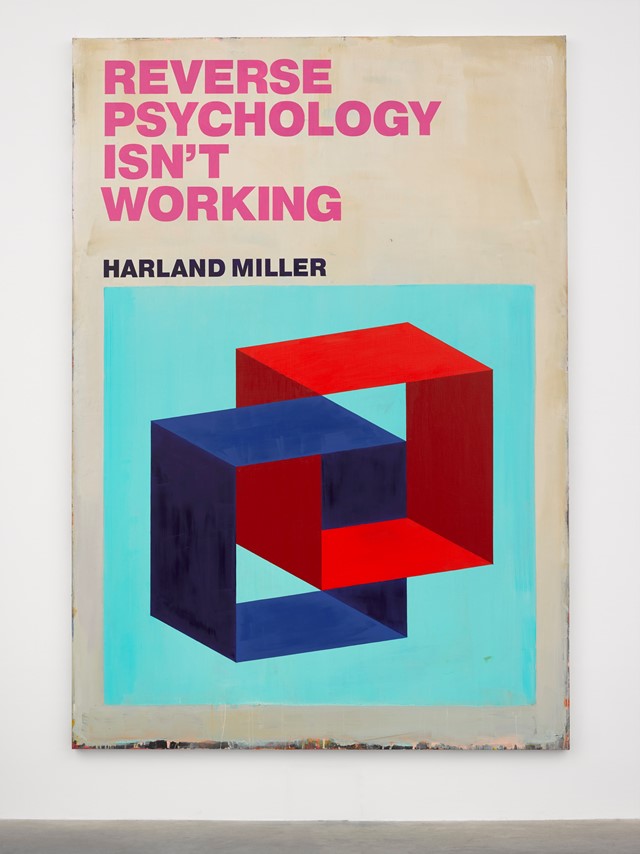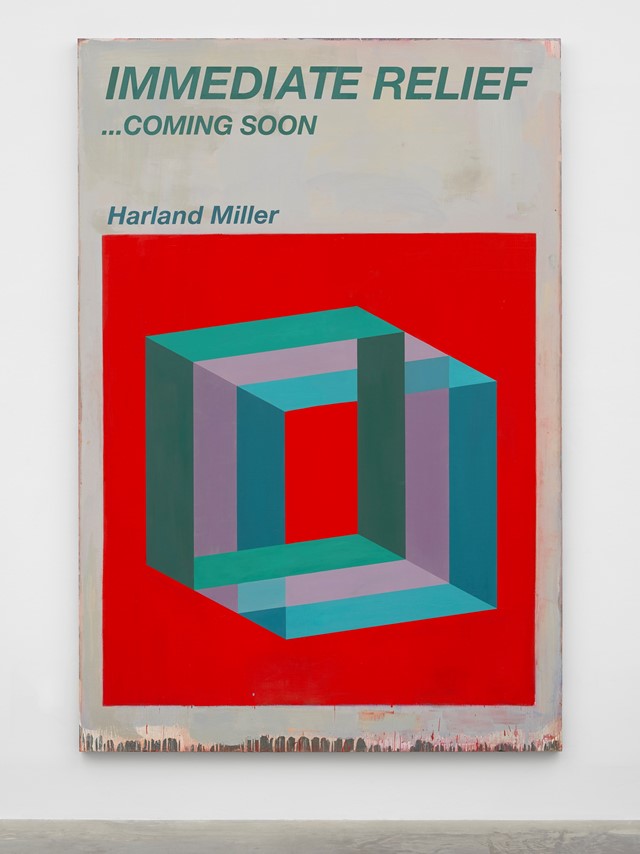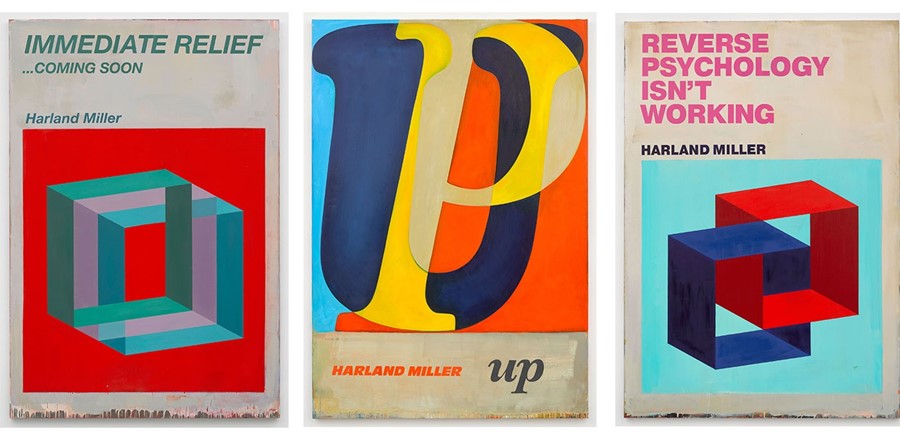As his new exhibition opens at White Cube Mason’s Yard, we speak to Harland Miller about his darkly funny new works
Harland Miller is not an easy person to get hold of. I hear the artist’s very pleasant voice, (soothing, with a lilting Yorkshire accent) for only a few minutes over the phone before he disappears again – somewhere in his Bermondsey studio perhaps, where he’s busy preparing for his newly unveiled White Cube show (he’s been working with Jay Jopling and the gallery for years).
Like all attractive artists, Miller is casually elusive – a closed book, like his paintings. Books have been the mainstay of his practice since he graduated from Chelsea School of Art in the late 80s, and if he’s not writing them (he’s published a successful novel about a David Bowie impersonator, and a novella about an OCD sufferer based on a collection of personal polaroids of oven buttons switched to off) he’s painting them. Most famously in 2001 he re-imagined the Penguin book titles with sexual frisson, self-reflexive wit and F-words. Incurable Romantic—Seeks Dirty Filthy Whore; High on Hop; Don’t Let the Bastards Cheer You Up, to name but a few.

There’s nostalgia in the new works, as there was in the Penguin paintings, for a bygone British demeanour and practicality – and of course, it’s reflected in his sardonic humour and passion for paranomasia. Fans of this element of his work won’t be disappointed with his new exhibition at Mason’s Yard, which has titles like Reverse Psychology Isn’t Working, Immediate Relief... Coming Soon, and, brilliantly, Armageddon – Is It Too Much To Ask?.
Clearly, Miller has been thinking about our current times, but it’s refracted as always through the world of books. The main inspiration for this exhibition – One Bar Electric Memoir – comes from his personal collection of 1960s and 1970s psychology and social science books, with their no-nonsense, commonsensical approach to solving problems, whether it’s an individual’s mental state or society as a whole. It was a time when, as Miller puts it, “information was being made more available and being hungered for, too. It was often practical and pre-jargon and to do with fixing things – fixing society, fixing yourself...” Hardly something that seems possible now.

You’d be forgiven for thinking the book cover format might get stale, but for the first time here, the artist has invented his own. It’s an interesting experiment in the ways art influences us. By recreating the same fictional title with different colours, typefaces and composition, Miller demonstrates the subliminal effect these things have on the way we see. Of Armageddon..., for example, he says, “it’s an image that you see one way – then, when you relax, it flips and, no matter how hard you try, you can’t see it the original way. It’s symbolic of the way you read the title.”

The series is as enigmatic as the man who made them, but next year might see this elusive nature change. Why? BBC Radio 3 will present Miller’s memoir in five parts, a voyage through his working life, traced from his childhood and ideas about how he started thinking about art, through his art school days and the time he spent living in New York and Berlin in the 1990s, to finish up in more recent years, when success and recognition come his way. Miller will narrate the series himself.
One Bar Electric Memoir runs until September 9, 2017 at White Cube Mason’s Yard.
